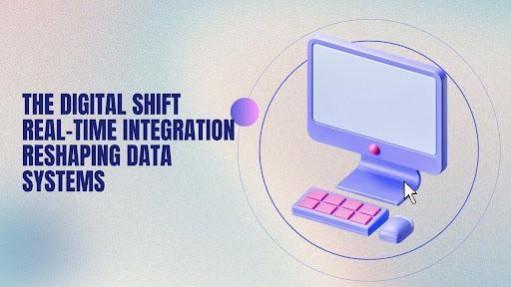
In an era where data moves at the speed of thought, real-time integration has emerged as a cornerstone of modern digital infrastructure. Lakshmi Bhargavi Mullapudi, an expert in data engineering, delves into the transformative evolution of data systems in her latest work, highlighting the shift from traditional batch processing to dynamic, event-driven architectures. This transition is not just a technological upgrade it represents a fundamental redefinition of how organizations handle, process, and leverage data for strategic advantage.
From Batch Processing to Real-Time Systems
The evolution from batch processing to real-time data systems signifies a crucial transformation in data management. Traditional batch systems processed data at scheduled intervals, delaying insights and decisions. While effective in their era, they lacked the responsiveness needed today. Modern enterprises now utilize stream processing frameworks that enable instantaneous data handling, ensuring real-time access to critical information.
The Driving Forces Behind Real-Time Integration
The shift to real-time data systems is driven by several factors. The exponential increase in data volume and velocity requires efficient handling solutions. AI and machine learning now play a crucial role in processing, necessitating real-time data availability. Additionally, advancements in cloud and edge computing have enhanced infrastructure scalability and flexibility, making real-time processing both feasible and essential.
Event-Driven Architectures: The Core of Modern Systems
Event-driven architecture (EDA) has revolutionized real-time data processing by enabling asynchronous communication between services. Unlike traditional request-response models, EDA facilitates instant reactions to data changes, ensuring seamless workflow automation. Organizations adopting this approach have reported significant improvements in system responsiveness, scalability, and fault tolerance, making it a preferred choice for industries reliant on real-time insights.
Microservices: Enhancing Modularity and Performance
Microservices integration has further strengthened real-time data ecosystems. By breaking down monolithic applications into smaller, independently deployable units, organizations can achieve greater flexibility and scalability. These microservices communicate through event-driven frameworks, ensuring that data flows efficiently across various components. This approach has led to improved system performance, faster deployment cycles, and enhanced resilience in handling large-scale data transactions.
Overcoming Challenges: Ensuring Data Consistency and Scalability
While real-time integration offers many benefits, it also presents challenges in maintaining data consistency and scalability. Organizations use automated validation techniques and governance frameworks to ensure accuracy across multiple sources. Scalable architectures with load balancing and fault tolerance handle peak workloads efficiently, reducing downtime and enhancing data reliability without compromising system stability.
Edge Computing: Bringing Processing Closer to the Source
Edge computing is transforming real-time data systems by decentralizing processing power. Processing data at the source minimizes latency and boosts application efficiency. This approach is vital for industries like healthcare and manufacturing, where real-time processing is critical for operational success and improved responsiveness to immediate data needs.
AI and Machine Learning: The Next Frontier
Artificial intelligence and machine learning are becoming indispensable in real-time data integration. AI-powered analytics allow organizations to extract valuable insights instantaneously, driving more informed decision-making processes. Additionally, machine learning models thrive on real-time data streams, continuously improving their accuracy and effectiveness in predictive analytics, fraud detection, and personalized recommendations.
The Road Ahead: Future Trends in Data Systems
Advancements in sustainable computing and AI-driven automation will shape real-time integration. Organizations are optimizing energy use in data processing for environmental sustainability. AI-driven engineering is enhancing automation, minimizing manual tasks, and boosting data accuracy and processing efficiency, ensuring high-performance systems meet evolving technological and ecological demands.
In conclusion, the shift from batch processing to real-time integration marks a major milestone in data systems engineering. As organizations embrace event-driven architectures, microservices, and AI-powered analytics, data processing becomes more agile and efficient. Lakshmi Bhargavi Mullapudi's insights highlight how real-time integration is shaping the future of digital transformation, ensuring scalability, reliability, and innovation.








![Sky is the limit: IndiGo is now tenth largest airline by capacity globally; growth indisputable [details]](https://data1.ibtimes.co.in/en/full/767455/sky-limit-indigo-now-tenth-largest-airline-by-capacity-globally-growth-indisputable-details.jpg?w=220&h=138)








